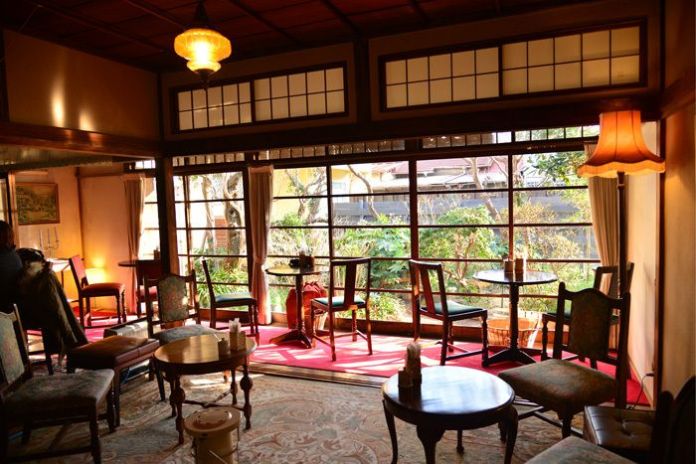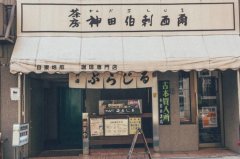The Reform Movement of Japanese Coffee Culture-- the push of Modernization

For professional baristas, please follow the coffee workshop (Wechat official account cafe_style)
In the last article in this series, "Frozen Coffee across the Ocean, creating the birth of Japanese Coffee Culture," we learned about the influence of the Netherlands on Japanese coffee culture in the Edo era. However, after the opening of port and trade, Japan experienced Meiji Restoration and began to accept Western culture under the influence of the westerly wind to the east.
At this time, coffee was widely respected and loved, and became a "high-end drink" nowadays. Coffee shop culture began to flourish, and the development of this period had a profound impact on Japanese coffee culture.
Meiji Restoration of opening Port and Trade
In 1854, Japan and the United States signed the Treaty of Kanagawa, also known as the Treaty of Peace and kinship between Japan and the United States, which opened the two ports of Shimada and Hakodate, and signed the Treaty of Trade between Japan and the United States in 1858. Under the chaotic situation at that time, in the face of constant pressure from the United States and the defeat of the Opium War in Taiwan, Japan was forced to sign various unequal treaties, ending the policy of locking up the country for more than 200 years.
At this time, the internal unrest in Japan, everywhere launched a curtain movement, eager to overthrow the shogunate regime. In 1867, Yuki Tokugawa returned power to the emperor, which is what we are familiar with as "the return of the great government".
At that time, Emperor Muren changed the Yuan "Meiji" and carried out a series of reform movements, called "Meiji Restoration". It not only established a constitutional monarchy, introduced Western-style education, and advocated "civilization", but also made some reforms in transportation, economy and military affairs.
Meiji Emperor of Japan
The rise of Japanese Cafe Culture
When it comes to Japanese cafes, you have to know that there are two coffee lovers. One of them is the world's first coffee chain, ── Old S ã o Paulo Cafe, and the other is Amber Coffee, which claims to be the first Japanese coffee shop, and both cafes happen to be located in Badingmu Ginza. At that time, cafes were like a gathering place of humanities, and even became the forerunner of the second wave of coffee, setting off a trend of chain cafes in Japan.
Learn more about ►►► 's second Coffee Wave: how does Starbucks sweep the world from New York to Taipei? )
The first coffee shop chain in the world is in ── Old S ã o Paulo Cafe in Japan.
The first coffee shop chain, Caf é Paulista, was opened by the Japanese-born Mizuano Dragon, whose name shows that he has an inextricable relationship with Brazil.
Brazil has widely recruited immigrants for economic development. Since 1908, Japan has exported a large amount of manpower to Brazil, which has become the country with the largest number of Japanese expatriates, while many people were engaged in coffee cultivation in the Brazilian state of Sao Paulo at that time.
The first old S ã o Paulo cafe opened in Ginza. At first, the main purpose of Shuiye Dragon was to promote coffee in Japan, but also to sell coffee beans in the store. Brazil can provide a stable source of beans, making the old S ã o Paulo Cafe offering affordable coffee, which has become one of the motivations to attract many intellectuals and artists to patronize.
Old S ã o Paulo Cafe logo
── Amber Coffee (Caf é de L'ambre), the first coffee shop in Japan.
Amber Coffee, opened by Mr. Ichiro Kanaguchi in Ginza, Tokyo in 1948, has become one of the cafes where coffee fans must make a pilgrimage to Japan. The coffee beans used in amber coffee are mostly old beans, which need to be roasted after years of rest, and the taste is light and soft, which is in line with the preference of the Japanese.
Operator Ichiro Kanaguchi, the predecessor of Chongjing in the Japanese coffee industry, still operates more than a dozen Amber Coffee. Now over 100 years old, Kaniguchi insists on selling only coffee, making Amber Coffee the first and longest-serving coffee shop in Japan.
In addition, Ichiro Kanaguchi has also developed a Grid Mill bean grinder and a crane mouth enamel hand punching pot to improve the lack of equipment in the past, which are now on the market.
A view of the amber coffee shop
Japan's contribution to the history of coffee
Japan has made many contributions in the history of coffee, that is, the improvement of soluble coffee and the invention of canned coffee are related to Japan, and it has formed a set of Japanese style in hand brewing and roasting. The following goat coffee will talk about the inventions that have played an important role in the history of these coffee.
Improvement of instant coffee
Instant coffee is a fast brewing drink made from coffee, which needs to go through the process of roasting, grinding, extraction and drying. Satori Kato of Japan is an important figure in the improvement of instant coffee, while David Strang of New Zealand is recognized as the first person to invent instant coffee after textual research, and obtained a patent in 1890.
In 1901, Satori Kato improved instant coffee and used vacuum drying to make instant coffee drinkable with water. George Constant Washington is responsible for the development of instant coffee production technology, and during the World War, the US military drank a lot of instant coffee, making it possible to make a cup of coffee quickly in a difficult and inconvenient environment.
Learn more about the history of ►►► 's first wave of coffee: who makes office workers have a drink with you no matter how busy they are? )
The invention of canned coffee
In 1969, Shangdao Coffee (Ueshima Coffee Company, UCC) began to sell canned coffee, while UCC has been established for more than 80 years.
In recent years, there are also Boss, Georgia … And other brands specialize in canned coffee this market, according to everyone's preferences to develop a variety of flavors, in the packaging is stylized to attract the attention of buyers.
You must have heard of the variety of vending machines in Japan. Canned drinks and snacks are not uncommon. Japanese vending machines even have hot food and popsicles. Wait. We often say that "technology comes from human nature". In view of the fact that the Japanese pay more and more attention to coffee grinding and brewing, this interesting-looking "automatic grinding coffee vending machine" was born, and the film below can watch the complete process of getting out of the cup.
Japanese Coffee planting Industry in Taiwan
In view of the increasing demand for coffee, the Japanese began to try to grow coffee. In fact, Taiwan's early coffee culture was deeply influenced by Japan, which can be witnessed in the era of Japanese occupation in Taiwan. The Japanese set up agricultural institutions in Taiwan and set up a "tropical plant breeding farm" in Hengchun in 1902 to actively cultivate the coffee industry.
At the 1907 Tokyo Kongye Expo, the coffee grown in Taiwan attracted a lot of attention, and Emperor Taisho also affirmed its quality at that time. Later, although the war and leaf rust had a serious impact on Japanese coffee cultivation in Taiwan, it is undeniable that Japanese coffee cultivation in Taiwan has laid the cornerstone of Taiwan's native coffee.
Important Notice :
前街咖啡 FrontStreet Coffee has moved to new addredd:
FrontStreet Coffee Address: 315,Donghua East Road,GuangZhou
Tel:020 38364473
- Prev

Introduction of Coffee Cat, condensed Milk and Didi Pot in Vietnamese Coffee Culture
Professional baristas Please pay attention to Coffee Workshop (Wechat official account cafe_style) Coffee is not only an important cash crop in Vietnam, but also an indispensable drink for people's life. When it comes to Vietnamese coffee, what's the first thing that comes to mind? Is it Robusta, the Didi pot, or the sweet condensed milk? Vietnam's coffee industry is developing rapidly, and the export volume of coffee beans is second only to Brazil.
- Next

The birth of Japanese coffee culture is inseparable from the ice drop coffee that crosses the ocean.
Professional barista exchanges, please pay attention to coffee workshop (Weixin Official Accounts cafe_style ) Japanese cafes are springing up like mushrooms. They not only have various types of cafes, but also maintain the traditional dedication spirit, gradually becoming the third space for people to relax and discuss. Whether it is a hand-made appliance with both appearance and utility, or a unique baking and brewing hand
Related
- How did the Salvadoran coffee industry develop in Central America?
- What exactly does the golden cup extraction of coffee mean?
- The Origin of Coffee flower
- [2023 Starbucks World Earth Day] there are more meaningful things besides free Starbucks coffee!
- What kind of coffee is there in Spain? 9 Flavors of Spanish Coffee
- Aromatic African coffee| Kenya's coffee culture and historical production area
- Liberica Coffee Bean knowledge: the characteristics of Liberian Coffee beans of the three original species of Coffee beans
- The origin and formula of Spanish latte introduces the taste characteristics of Bombon coffee in Valencia, Spain.
- How to adjust the solution of over-extracted coffee
- What is the tasting period of coffee beans? What is the period of coffee and beans? How should coffee wake up and raise beans?

